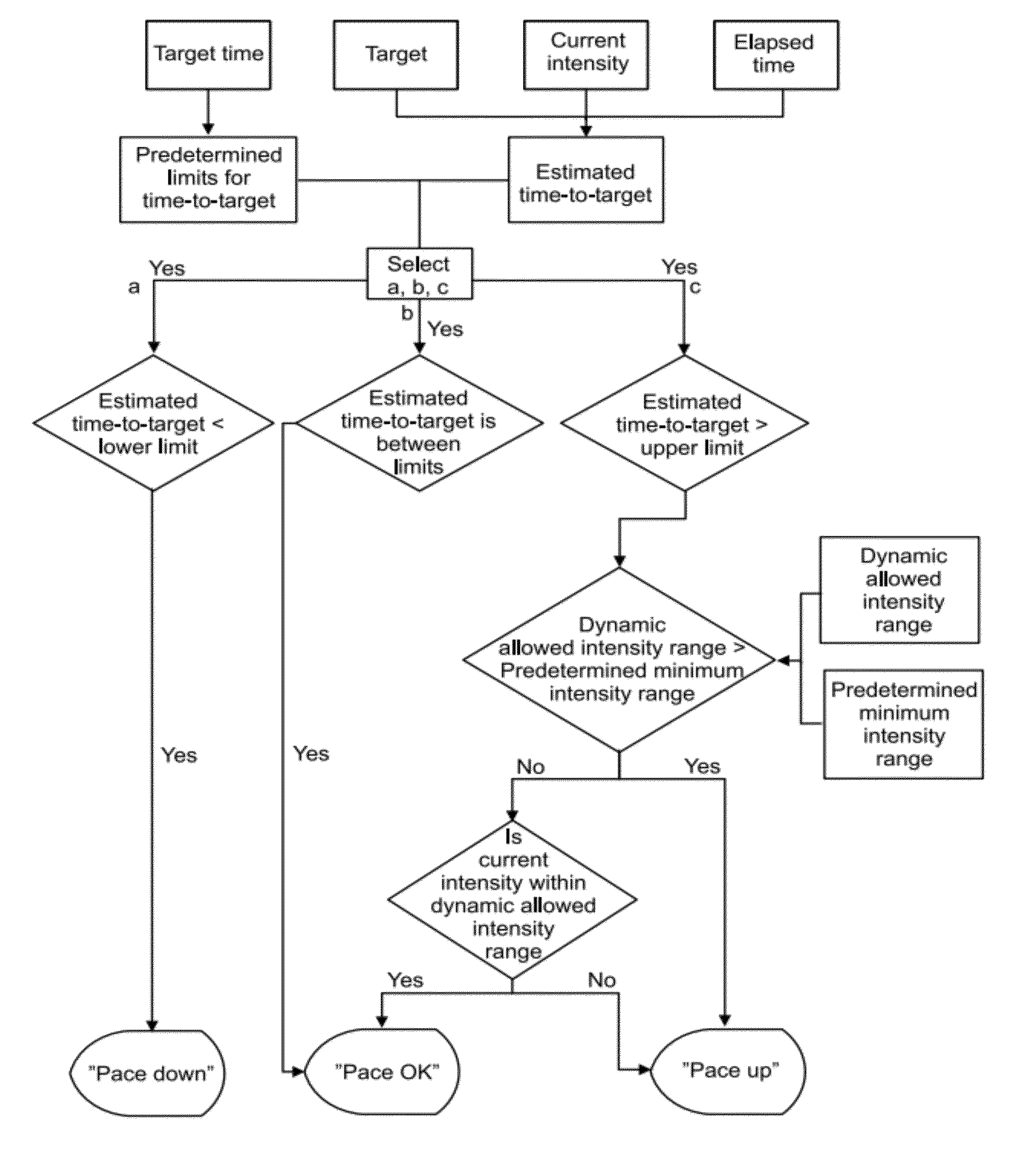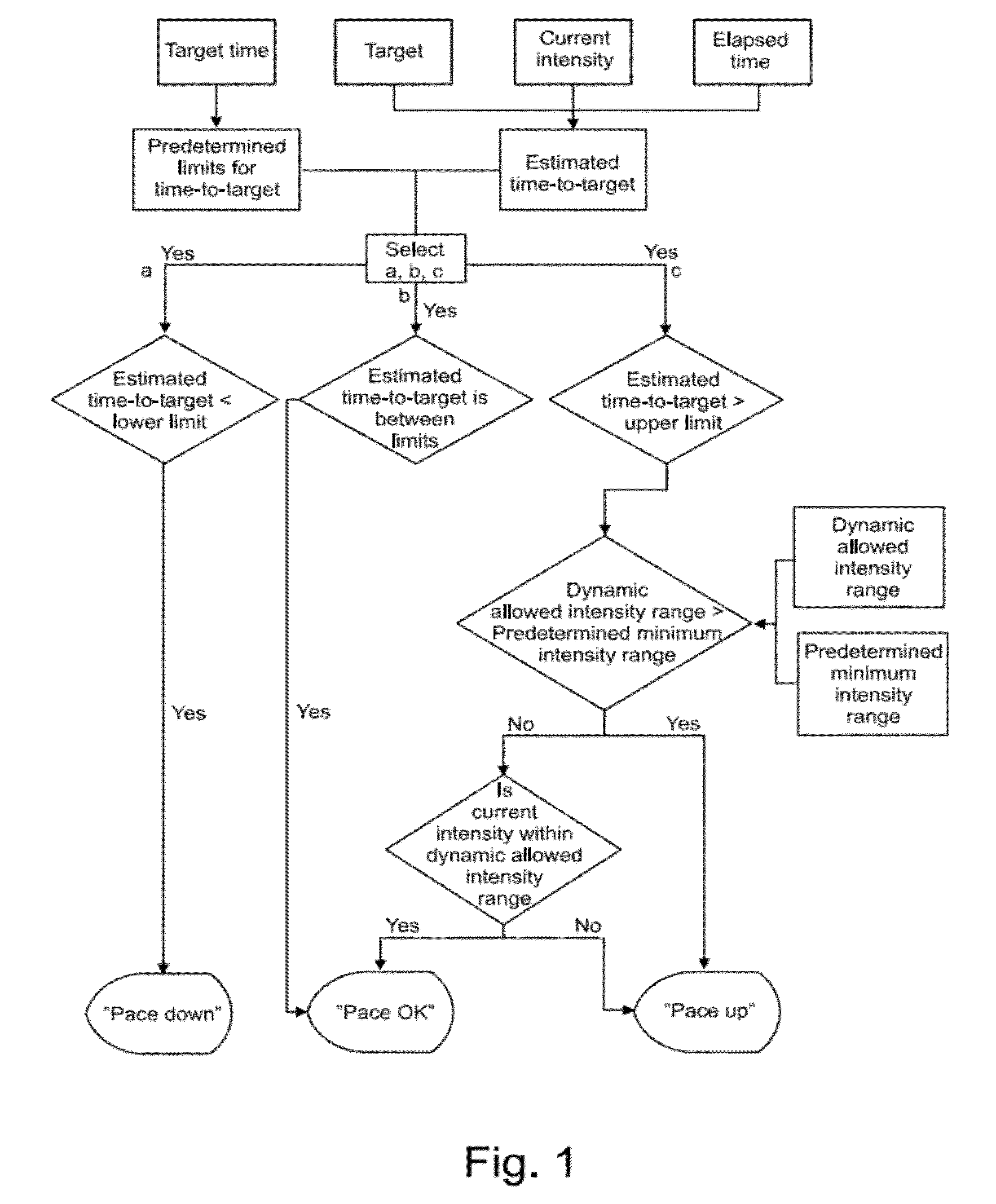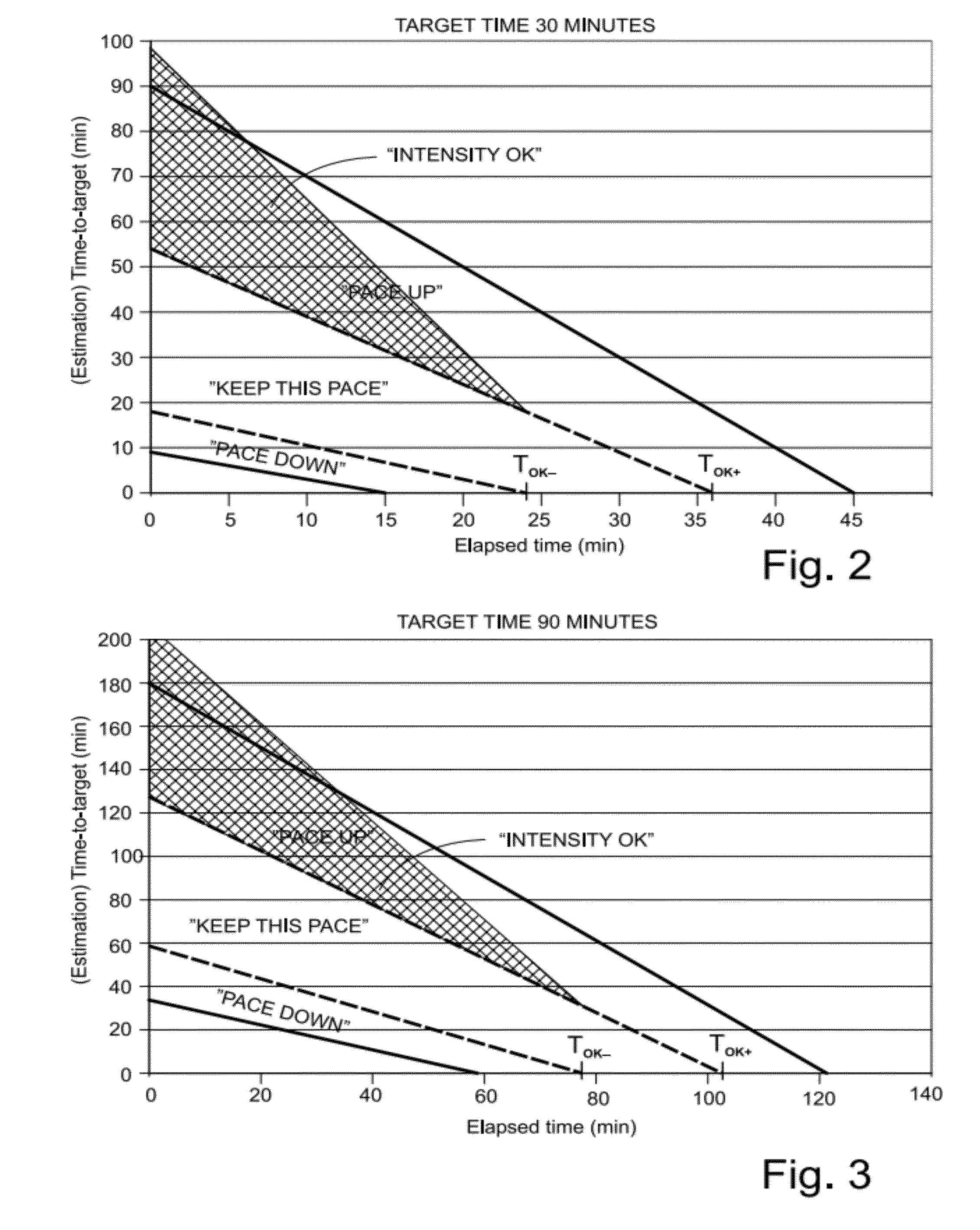Method for guiding a person in physical exercise
a technology for guiding people and physical exercise, applied in the field of improving physical fitness in sport and exercise, can solve the problems of difficult training on the basis of feedback based on such a narrow intensity range, difficult for users, and complex decision criteria for oriented training
- Summary
- Abstract
- Description
- Claims
- Application Information
AI Technical Summary
Benefits of technology
Problems solved by technology
Method used
Image
Examples
example 1
Practical Example 1
[0173]In one embodiment of the invention a specific training-effect target and a specific distance target are set. The application of the distance / training effect target pair is shown in FIG. 13 and is reviewed in the text below according to the numbered stages shown in the figure:[0174]1. The user sets the training-effect target and the distance or route target. In the system depicted, a specific training-effect target always corresponds to a specific EPOC value, which can either be displayed to the user, or be only known to the system.[0175]2. The user starts the workout, during which the speed is measured and the intensity estimated. The intensity can be calculated with the aid of heart rate, speed, or some other variable, for example, the pedaling power measured from the pedals of a bicycle.[0176]3. When the time, distance travelled, and speed at a specific moment are known, it is possible to estimate how much time must still elapse to travel the distance set ...
example 2
Practical Example 2
[0184]Initial data: a heart rate measuring device is available, which can also measure the distance travelled / speed in real time during the exercise. The altitude data is not known beforehand, so that it cannot be utilized in the intelligent planning of the route. The user wishes to make a developing workout (training effect 3.5) over their usual loop route, the length of which (8.3 km) the user knows already. Description: the user sets the training effect target to 3.5 and the distance target to 8.3 km. on the device and starts running. From the device / earphones the user is informed if the present pace is suitable, too fast or too slow relative to reaching the training-effect target in the target distance. During the first third of the workout, the pace is slightly too fast, so that the user is given feedback showing that the target would be reached at 5 km. The device advises the user to decrease the intensity slightly. For the remainder of the workout the user ...
example 3
Practical Example 3
[0186]Initial data: a heart rate measuring device, which can also measure the distance travelled / speed in real time during the exercise, is available. The route, over which the user wishes to make a developing workout (training-effect 3.5), is known along with its altitude data. The first quarter (1 / 4) of the route is flat, the second quarter (2 / 4) uphill, the third quarter (3 / 4) downhill, and the fourth quarter (4 / 4) flat.
[0187]The user uploads the route data to the device and sets the training effect target as 3.5. Because the beginning of exercise is relative flat, the accumulated training effect in this portion of the route is less than in the uphill segment. On the uphill segment a higher intensity is permitted and thus more training effect is accumulated. This pleases the user, as it is pleasant to run quickly in uphill and not being required to reduce speed to walking pace. On the downhill segment, the intensity is guided to be pleasantly slightly lower and...
PUM
 Login to View More
Login to View More Abstract
Description
Claims
Application Information
 Login to View More
Login to View More - R&D
- Intellectual Property
- Life Sciences
- Materials
- Tech Scout
- Unparalleled Data Quality
- Higher Quality Content
- 60% Fewer Hallucinations
Browse by: Latest US Patents, China's latest patents, Technical Efficacy Thesaurus, Application Domain, Technology Topic, Popular Technical Reports.
© 2025 PatSnap. All rights reserved.Legal|Privacy policy|Modern Slavery Act Transparency Statement|Sitemap|About US| Contact US: help@patsnap.com



